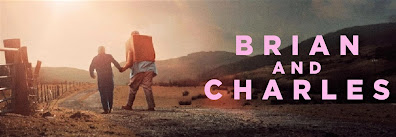Tuck Everlasting (Natalie Babbit): This is our next Storysmith bookgroup book. We’ve come up with an occasional theme of 'my favourite book I don't mind others laying into' series… and this children’s book (first published in 1975) is the first selection. It reminded me of Max Porter’s wonderful book ‘Lanny’ and also ‘The Buried Giant’ (Kazuo Ishiguro). On the face of it, perhaps not an obvious bookgroup choice (especially for an old codger like me!)… The book starts in 1880. The Tuck family lives in the small rural town in New Hampshire. There is a spring there, with water that will give you immortality and you’ll never grow old. The Tuck family knows this because 80 years earlier they drank the water and haven't aged a day since. But then 10 year-old Winnie Foster stumbles on their secret and the Tucks take her home and explain why living forever at one age is less a blessing that it might seem. Complications arise when Winnie is followed by a stranger who wants to market the spring water for a fortune. *no spoilers*! A rather lovely story (sometimes perhaps a little haunting/frightening if you read it/were read it as a youngster?)… which made a welcome change to UK politics!
Sunday, July 31, 2022
july 2022 books…
Wednesday, July 20, 2022
eric ravilious: drawn to war…
Moira and I went along to the Watershed this afternoon to see Margy Kinmonth’s excellent documentary film on landscape artist Eric Ravilious (who died in a plane crash in 1942, aged 39, during his time working as a war artist for the MOD).
Although I’ve been aware of Ravilious’s work for a number of years, it’s only really in the past 6-7 years (largely thanks to the enthusiasm for his work by my great friend David McLaughlin) – during which time I’ve accumulated a number of books relating to his life and his art.
As the film emphasises, Ravilious is a grossly undervalued artist (literally – during his time working for the MOD in WW2, they were keen to buy ten of his original submarine pieces for £2 10s each… that’s £25 for all TEN!!)(I wonder what they’d be worth today?). But, as well as being undervalued, he’s also been largely forgotten - indeed, a trove of Ravilious’s work was discovered hidden under a bed for 40 years (the bed was that of graphic artist Edward Bawden, who was best man at Ravilious’s wedding)!
Working in watercolour, pen and ink and woodcut engraving, Eric Ravilious’s work combined rolling English landscapes (particularly the South Downs) with a “sensibility that was bold in its modernity and economy” (Wendy Ide, The Guardian, 3 July 2022). He engraved more than 400 illustrations and drew over 40 lithographic designs for books and publications during his lifetime.
PS: After 2 years of trying, in 2019 I eventually managed to persuade Bristol Museum and Art Gallery to let me see Ravilious’s “Tennis Triptych” (1930) – which the gallery keeps shut away in its extensive archives. I think it’s time they put it on permanent exhibition.
Thursday, July 14, 2022
june-july 2022 books…
Right Ho, Jeeves (PG Wodehouse): In yet another effort to avoid all the
horrible stuff going in the world, I’m afraid I reverted to the
‘tried-and-tested’ Wodehouse to brighten things a little. This book (first
published in 1934) is yet another of his somewhat predictable upper-class sagas
about country houses, expensive living and not-so-bright-young-things featuring
Jeeves and his trusty butler Wooster. The story is rather like many of
Wodehouse’s other Jeeves’ books, but I enjoy his writing style (obviously now
very dated) and clipped remarks… and, of course, the ridiculous character names
(Gussie Fink-Nottle, Tuppy Glossop, Pongo Twistleton and the like). Easy
reading.
Wednesday, July 13, 2022
brian+charles…
Yesterday, while everyone else bathed in the sunshine, I went along to the Watershed to see Jim Archer’s film “Brian and Charles” – about an eccentric inventor, Brian, and his home-made, ramshackle robot, Charles. Actors and co-writers David Earl (Brian) and Chris Hayward (Charles) originally came up with the idea via an internet radio show and a live standup act that apparently spawned “an eye-catching short film” in 2017.
Brian lives alone in a remote cottage in the valleys of north Wales, where he spends his time in his ‘infamous inventions pantry’ (ie. his cowshed). Here, he knocks together outlandishly madcap creations such as the pinecone bag, the flying cuckoo clock, the egg belt and trawler nets for shoes – until one day the discovery of a fly-tipped mannequin head gives him bigger ideas. Having built his robot, Brian thinks it’s best to keep Charles a secret from the locals, and so they spend their days playing darts, cooking cabbages, riding bikes, having pillow fights and watching TV travel shows (as you do!). Hazel (played by Louise Brealey), a kindred spirit, lives in the village with her domineering mother and a talkative parrot… and Charles duly encourages Brian to ‘court her’… *no spoilers*!The film’s director reckons it’s “primarily about loneliness and the power of friendship and companionship”… and it’s certainly that.
It’s ridiculous, but absolutely charming…
and even joyful.
Barmy, but beautiful.
You need to
see it.
PS: Somewhat bizarrely, in contrast… in
the evening, I sat down with Moira and watched ‘Thelma and Louise’ on iPlayer!!




